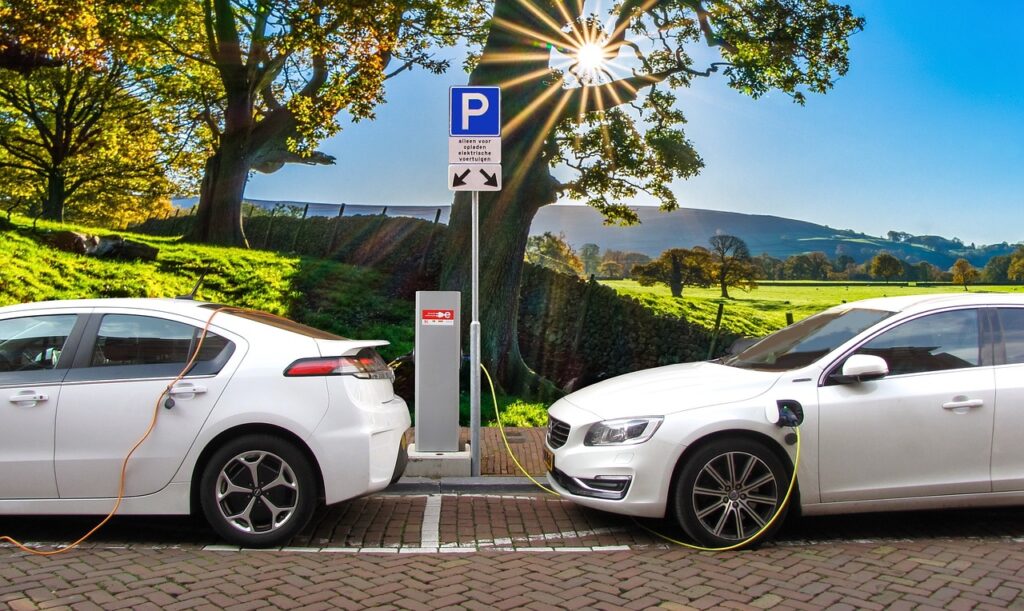The International Energy Agency (IEA) posits that the transport sector is one of the dominant carbon emitters. The energy transition plan also highlights the substantial contribution of the transport sector to total emissions, accounting for over 40%, the second-largest after the power sector. Consequently, the ETP proposes a shift from diesel/petrol vehicles to hybrid and electric vehicles (EVs) as a strategy to decarbonize Nigeria’s transport sector. This article sheds light on the actions and policies to materialize this objective.
Electromobility, or e-mobility, encompasses electric cars, bikes, pedelecs, e-buses, and trucks—all of which operate fully or partly on electricity and draw their energy primarily from the power grid. EVs produce less greenhouse gases than internal combustion engines such as gasoline and diesel-powered vehicles. Integrating electric vehicles into public transportation could provide commuters with clean, affordable, and convenient options. This approach would reduce emissions and demonstrate the viability of EVs to the general public. For example, in a city like Lagos, Nigeria, with a relatively large stock of mini-buses for public transit, the bus fleet’s electrification could yield more benefits than other types of vehicles.
Electric Vehicles (EVs) are poised to become increasingly common on global roads. Several countries, including Norway, Iceland, Sweden, the Netherlands, and China, embrace e-mobility. Recently, Ford Motors announced that it was investing R5.2 billion into its South African Silverton production plant. They will start producing the first-ever Ranger plug-in hybrid electric vehicle, targeting energy self-sufficiency by 2025.
The Federal Government’s strategies thus far
Nigeria recognizes the role of EVs in the journey to net zero. This is evidenced by the launch of Nigeria’s first Electric Vehicle in June 2021. Earlier in the year, the Governor of Lagos State, Babajide Sanwo-Olu, informed us about delivering the country’s first set of electric buses. Another Progress made towards advancing E-Mobility in Nigeria is the establishment of commercial charging stations for electric vehicles. Efforts are also under full swing to frame a policy for implementation. The National Automotive Design and Development Council (NADDC) revealed in July 2023 that their Electric Vehicle Development Plan has entered the final stages for ratification and implementation.
Possible challenges and solutions
Despite the recent progress on EV deployment, reaching a trajectory consistent with climate goals is a formidable challenge, especially for Nigeria. The commercialization of EVs in the country will require that fundamental issues be dealt with. In Nigeria, more than half of grid-connected customers suffer frequent power outages that last several hours or days. To promote e-mobility, the power grid must be stabilized and strengthened to support the increased electricity demand from EVs. Additionally, alternative solutions like solar-powered charging stations could be explored.
Furthermore, Public EV charging infrastructure is at its nascent stage in Nigeria. Charging stations are a fundamental composition of an enabling environment where the EV industry can thrive. Charging infrastructure is vital to address “range anxiety,” which is referred to as a fear that the vehicle may run out of power before reaching a charging point. Installing charging stations, particularly in urban areas, is a priority, but the costs and logistical challenges are substantial. These charging infrastructures create more surges in electric load growth, and today’s grid is not equipped to meet this demand for power. To fully enable the EV revolution and decrease emissions from the transport sector, we need faster and smarter grid planning.
The comparatively high cost of electric vehicle assembly is a massive deterrent. In Nigeria, the current Tesla line (Model S, Model X, Model 3) ranges from N16 million to N58 million at the current exchange rate without customs. The recent reports by the Nigerian Bureau of Statistics state that half the population’s income remains at $1 per day or less. For many Nigerians, affordability is farfetched. Hence, policymakers in developing countries will need to improve their economy and foster accessibility through incentives and subsidies to lower the initial costs of EVs. These actions will encourage potential buyers to consider the eco-friendly option. Other key issues to be addressed are creating policies and regulations that align with global best practices and addressing the battery recycling challenge.
conclusion
Finally, the shift towards cleaner transportation systems may cause dire economic implications. Nigeria is a petroleum-dependent country, and a shift to electric vehicles could reduce oil demand, potentially affecting the country’s revenue. The government needs to plan for this economic shift by diversifying the economy through investments in agriculture, sustainable energy sources, and the promotion of manufacturing. Advancing E-mobility in Nigeria is a formidable task with several hurdles to overcome. There is no ‘one-size-fits-all’ approach to EV deployment. However, tackling the issues highlighted above and seizing the opportunities presented by E-mobility solves the dual challenge of reducing emissions and creating economic opportunities that drive technological innovation in the country.



